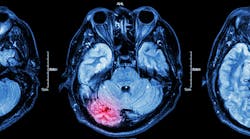Is your office "glow-free"?
Hidden dangers in dental offices
By Niki Henson, RDA, AS
If germs could glow, what would your office reveal? Does your infection-control protocol really get the job done? Imagine for a moment what you would see if germs could glow. What would the handle on the autoclave look like? When you put dirty instruments into the autoclave and close the door, contamination is deposited on the handle. When the cycle is complete, you open the door with ungloved hands, and then touch the clean instruments inside, which spreads diseases.
Is your darkroom a breeding ground for disease? If you looked in the tubs where you store the cement, endo stoppers, and other chairside items, would the bottle lids glow? Another common place for hidden contamination is the laboratory. The lathe and the laboratory sink should be disinfected after each use to prevent cross-contamination. These are only a few examples of the danger zones in our offices that we would see glowing ... if germs could glow.
Many dental assistants were trained on the job, and some received only short entry-level education. While their chairside skills may be wonderful, some assistants were never trained in proper sterilization. Also, some large offices use a sterilization assistant to sterilize all the instruments in the office. This position traditionally goes to the least trained staff member. It does not make sense that the most important job in the office, preventing cross-contamination, goes to the least trained person.
Remember the old telephone game from elementary school? A group of kids gets in line and the first person makes up a silly sentence. The first person in line whispers it to the second person. The second person whispers it to the third, and so on until the last person receives the message. The last person says the silly sentence out loud. The first person says the original sentence. All the kids laugh at how much the sentence changed from the original.
As childish as the game is, it holds a lesson that is relevant to our professional lives. Who taught you how to clean an operatory? Sterilize instruments? How do you know that you were taught the correct methods instead of receiving someone’s personal version? On-the-job training relies heavily on the correct transfer of information from the original sources — CDC, OSHA, OSAP, and the FDA — to the person who will perform the tasks.
If you have never stopped to read the original guidelines, you may have an altered form of reality. I encourage each of you to take the time to actually read and study both the guidelines and the guide to the guidelines in their original form. Then compare your office infection-control practices to the original guidelines. Adjust any discrepancies, and then keep a copy of the original guideline for future reference and new employees.
Ensuring your office conforms to the guidelines of infection control will protect you, other staff, your patients, and help your office be “glow-free.”
Author bio
Niki Henson is the president of Cornerstone Dental Academy, where she authored the curriculum and provides continuing education to dentists, hygienists, and dental auxiliaries. She travels as a speaker and consultant, and presents a variety of seminars and clinical programs. Ms. Henson is a Registered Dental Assistant, a member of the American Dental Assistants Association, an approved provider for the Academy of General Dentistry through the PACE program, professional member of the National Speakers Association, member of the Speaking Consulting Network, a BLS CPR instructor, and is active in dental legislation. In 2005, Niki received the “Woman of Distinction” award from Success in the City for her ethics and commitment to dental education. She can be contacted at [email protected].

